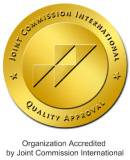Gastroscopy (also known as upper endoscopy) is an essential tool for diagnosing upper gastrointestinal disorders. Many people worry, “Is a gastroscopy painful?” But with advances in medical technology, the procedure has become safer and more comfortable. This article will introduce the gastroscopy process, the different types of gastroscopes and their pros and cons, helping you ease your concerns and undergo the examination with confidence.
Gastroscopy : Preventing Upper Gastrointestinal Diseases
When gastric cells undergo genetic mutations, normal cells may develop into malignant tumors. Furthermore, studies have shown that infection with Helicobacter pylori may increase the risk of developing stomach cancer. Today, gastroscopy has become a routine examination method that allows doctors to detect abnormalities in the upper digestive tract, such as gastritis, esophagitis, gastric ulcers, esophageal ulcers, duodenal ulcers, and gastric polyps, as well as to identify esophageal or gastric cancer at an early stage.
Why Is Gastroscopy Necessary?
Gastroscopy allows direct visualization of the mucosal lining of the esophagus, stomach, and duodenum, making it the gold standard for diagnosing various upper gastrointestinal conditions. Your doctor may recommend a gastroscopy if you experience any of the following symptoms:
- Persistent stomach pain, frequent indigestion, or acid reflux
- Unexplained weight loss, difficulty swallowing, vomiting, black or bloody stools
- A family history of stomach cancer or gastrointestinal diseases
- To rule out or further investigate serious conditions such as tumors, ulcers, polyps, or bleeding
Through gastroscopy, doctors can detect abnormalities like esophagitis, gastric ulcers, duodenal ulcers, gastric polyps, and even early-stage esophageal or stomach cancer. During the procedure, a biopsy may be performed to collect tissue samples for pathological analysis, enabling accurate diagnosis and significantly improving treatment outcomes and prognosis.
Principles and Mechanism of Gastroscopy
Gastroscopy is performed using a flexible endoscope equipped with a miniature camera and light source at its tip. The scope is inserted through the mouth and passes through the esophagus and stomach, reaching the duodenum. The diameter of the endoscope is typically thinner than a finger (approximately 0.8 to 1.2 cm) and is designed to bend and turn, allowing doctors to clearly observe the inner lining of the digestive tract. Real-time images are transmitted to a monitor for detailed examination. If necessary, the doctor may perform a biopsy, remove polyps, or carry out treatments such as stopping bleeding during the procedure.
Gastroscopy Procedure and Pre-Examination Preparation
Pre-Examination Preparation for Gastroscopy
If you decide to undergo a gastroscopy, you must follow your doctor’s instructions and stop eating and drinking at least six hours before the procedure.
Gastroscopy Procedure
Gastroscopy, also known as upper gastrointestinal endoscopy, involves the use of a light-guided tube approximately 0.9 cm in diameter, equipped with a camera at its tip. The doctor inserts the tube through the patient’s mouth and esophagus, allowing it to reach the stomach and duodenum for examination. If necessary, the doctor can extend forceps through the tube to collect tissue samples for pathological analysis. To ensure a smooth procedure, a local anesthetic spray is applied to the patient’s throat, and a sedative is administered intravenously. The entire examination typically takes around 10 minutes.
Post-Procedure Care and Precautions
After a gastroscopy, please follow these care instructions to ensure a smooth recovery:
- Throat Discomfort: As the endoscope passes through the throat, you may experience mild throat pain, numbness, or discomfort after the procedure. These symptoms typically subside within a few hours.
- Diet: Wait approximately 1-2 hours after the procedure until the anesthetic effect wears off and swallowing function returns to normal before eating. Start with liquids or soft foods, and avoid spicy, irritating, or overly hot foods.
- Rest: If sedatives were used, you may feel drowsy afterward. Avoid driving, operating machinery, or signing important documents on the same day, and arrange for a family member or friend to accompany you home.
- Monitor Symptoms: If you experience severe abdominal pain, persistent vomiting, fever, black stools, or bloody stools after returning home, contact your doctor immediately or visit the emergency room.
- Post-Biopsy Care: If a biopsy or polyp removal was performed during the procedure, your doctor will provide additional dietary and activity recommendations, which should be strictly followed.
Comparison Table of Three Types of Gastrointestinal Endoscopy Examinations
In addition to traditional gastroscopy, advancements in technology have introduced alternative methods of gastric endoscopic examination, each with its own advantages and disadvantages.
| Examination Method | Features | Advantages | Disadvantages |
| Traditional Oral Gastroscopy | Inserted through the mouth | Most commonly used; provides clear and detailed examination | May trigger gag reflex; requires use of a mouthguard |
| Transnasal Painless Gastroscopy | Uses a thinner scope inserted through the nasal passage | Reduces gagging discomfort; allows patient to speak during the procedure | Not suitable for individuals with narrow nasal passages |
| Capsule Endoscopy | Swallowable camera capsule | Non-invasive, no discomfort from intubation | Unable to perform real-time treatment or sampling |
Analysis of Advantages and Disadvantages of Gastroscopy vs. Barium Imaging
In the past, barium imaging (commonly known as a "barium meal") was the primary method for diagnosing upper gastrointestinal diseases. However, compared to modern gastroscopy, both methods have their respective advantages and disadvantages.
| Gastroscopy | Barium Meal X-ray | |
| Nature | Invasive | Non-invasive |
| Examination areas | Esophagus, stomach, duodenum | Esophagus, stomach, duodenum, and motility function |
| Image Clarity | Higher resolution, providing real-time, high-definition color imaging | Use X-ray imaging for observation |
| Examination and Treatment | The doctor can perform real-time therapeutic procedures during the examination, such as biopsy, polyp removal, or hemostasis. | Only diagnostic imaging is possible; no therapeutic intervention can be performed during the procedure. |
| Discomfort Level | Temporary mild to moderate discomfort | Virtually painless |
| Applicable Groups | People with suspected conditions who may require treatment | Individuals undergoing preliminary screening or unable to tolerate invasive procedures |
Who Should Undergo Gastroscopy?
Individuals experiencing symptoms such as difficulty swallowing, recurrent upper abdominal pain, acid reflux, indigestion, upper gastrointestinal bleeding, loss of appetite, or unexplained weight loss may need to undergo a gastroscopy.
People aged 40 and above are recommended to begin regular gastroscopic screening. Those with a family history of stomach cancer have a 2 to 4 times higher risk of developing the disease compared to the general population and should consider early and regular check-ups.
Risk Factors for Stomach Cancer
- Higher risk in men than women
- Advancing age
- Helicobacter pylori (H. pylori) infection
- Smoking
- Alcohol consumption
- Family history and dietary habits: prolonged intake of salty, pickled, and smoked foods
FAQ
Is Gastroscopy Painful?
Most people experience only brief throat irritation or a gag reflex, without significant pain. Nowadays, the procedure is often accompanied by throat-numbing spray, guided breathing techniques, transnasal endoscopy, or sedation options to greatly reduce discomfort. For those highly sensitive to pain, painless gastroscopy is also available.
Is General Anesthesia Necessary?
General anesthesia is typically not required for standard gastroscopy, which usually involves only local anesthesia of the throat. Painless gastroscopy uses sedation ("twilight anesthesia"), allowing the procedure to be performed while the patient is in a light sleep state. The level of sedation can be adjusted based on individual tolerance, though those with heart or lung conditions should consult a doctor specifically. The doctor will recommend the most suitable anesthesia method based on your health condition, anxiety level, and personal preference.
Can Normal Activities Be Resumed Immediately After the Examination?
If only local anesthesia is used, the anesthetic effect typically wears off within 1-2 hours, allowing swallowing function to return to normal and enabling eating and resumption of daily activities. However, if intravenous sedation or general anesthesia is administered, the medications may affect reaction time and judgment, potentially causing dizziness or drowsiness afterward. On the day of the procedure, you should avoid driving, operating machinery, or signing important documents. It is recommended to have a family member or friend accompany you home and to rest at home for the day, with normal activities usually resuming the following day.














